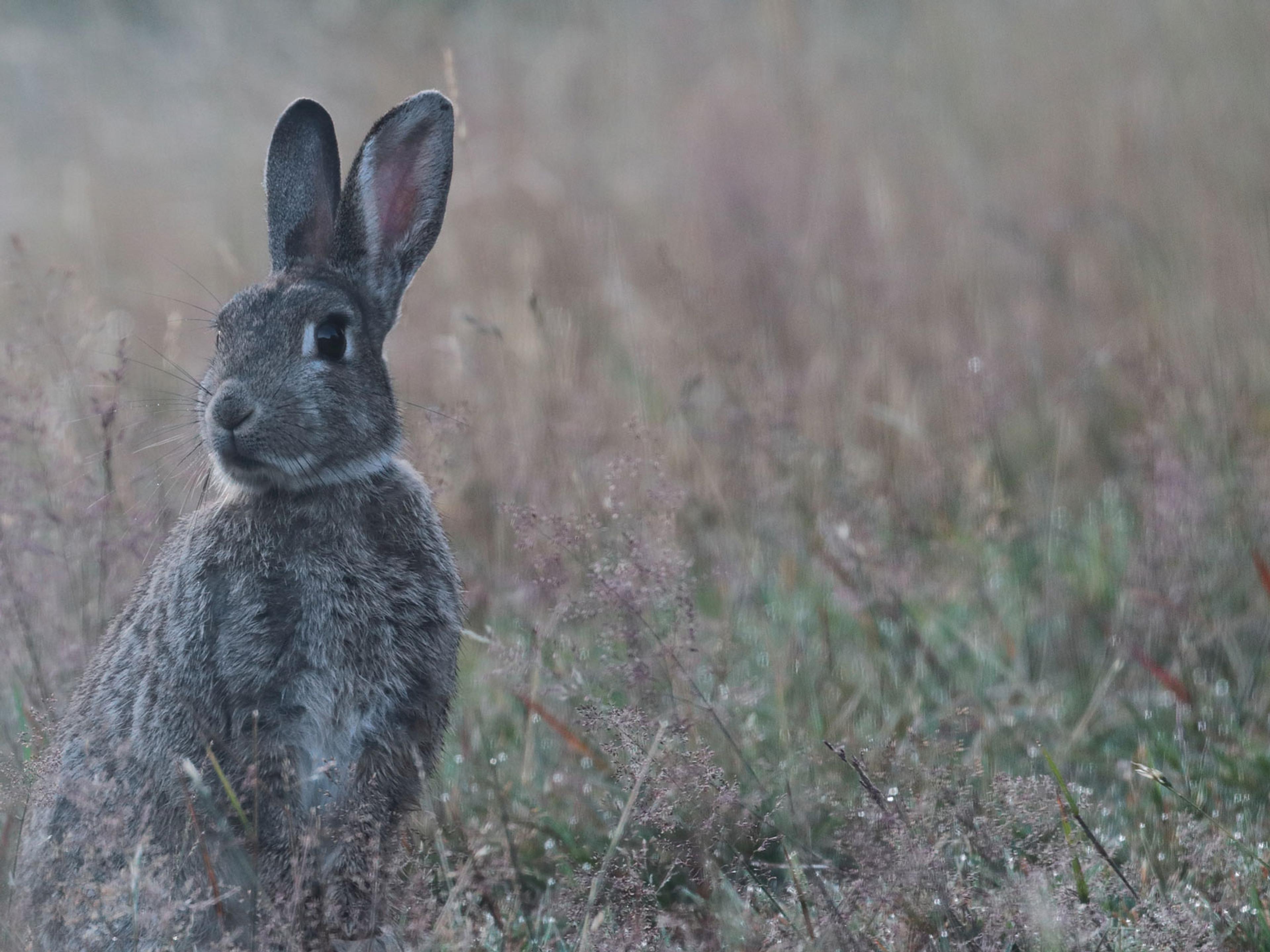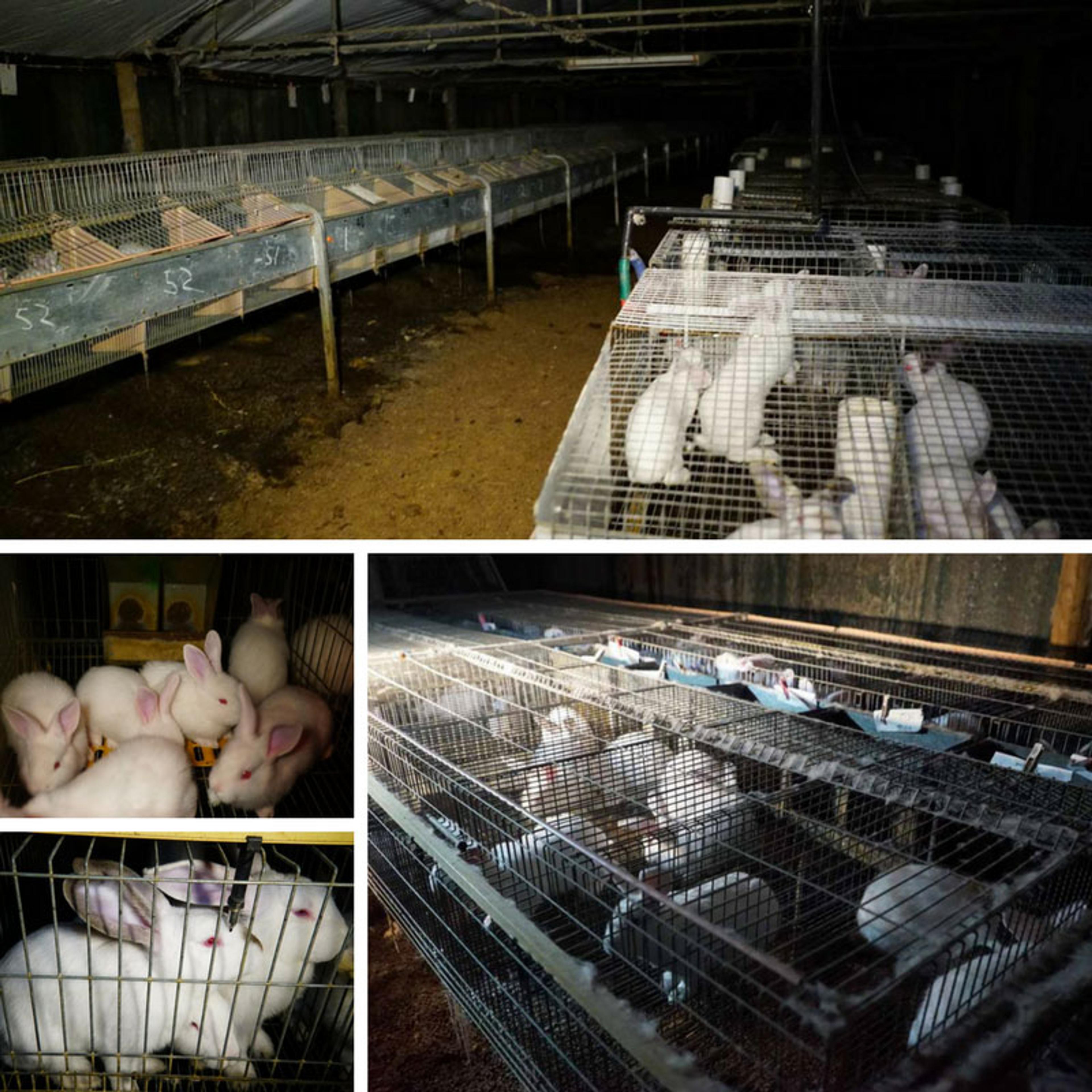Let's Talk Rabbit
Once thought of as a poor man’s chicken, rabbit is now seeing a culinary comeback in Australia, and is fast appearing on the menus of top restaurants around the country. It’s a tasty, versatile and nutritious alternative that can also have fewer environmental impacts than other popular meats. But not all rabbit is created equal…
Wild Rabbit
Rabbits are an introduced species from Europe and have been a pest in Australia for over 150 years. Today, Australia has a rabbit population of at least 150 million, causing an ecological disaster that has resulted in extensive environmental damage and the extinction of some native species.
Attempts to control rabbit populations
Scientists have attempted to control populations of pest rabbit species by introducing diseases such as myxomatosis and rabbit haemorrhagic disease virus (RHDV), with varying levels of success. It must be noted that these viruses often cause a painful death for infected rabbits, with symptoms of myxomatosis including swelling and discharge from the eyes, nose and anogenital region as well as extreme lethargy making it difficult to eat and causing susceptibility to other infections such as pneumonia. Most rabbits that contract myxomatosis die of haemorrhage and seizures within 10-14 days.
With RHDV most rabbits will die within 1-3 days of contracting the infection. In many instances, the rabbit will show no external signs of the virus, however, when symptoms do present they include weight loss, swollen eyelids, paralysis, ocular haemorrhages, convulsions and fatal bloody discharge from the nose. Ultimately RHDV causes the formation of blood clots in major organs such as the heart, lungs and kidneys, leading to heart and respiratory failure.
Eating wild rabbit
Given the damage that rabbits do to the habitat and the rampant way in which they repopulate, it makes environmental sense to harvest rabbits from the wild for human consumption.
Despite this, the vast majority of rabbits sold as meat products in Australia come from farmed rabbits, which are often raised in cages in much the same way as battery hens. One barrier is that food safety regulations prohibit the use of wild meat for human consumption unless it has been processed at an approved abattoir. This limits the ability of hunters to on-sell wild-harvested rabbit and hare to local food businesses; however, there are some specialty suppliers of wild game meat in Australia.
There may still be ethical concerns around the way rabbits are harvested in the wild, compliance with the Code of Practice for the Welfare of Animals in Hunting requires that hunters ensure a clean shot and swift death, which is preferable in comparison to the painful and protracted death caused by viruses used to control rabbit populations or the cruel way in which they are farmed.
Farmed Rabbit
Whilst a Code of Practice developed by the CSIRO guides the farming of rabbits in Australia, conditions vary widely amongst rabbit farms with the worst being compared to the conditions experienced by battery hens and other intensively farmed animals.
Intensive commercial rabbit farms house rabbits indoors in small raised cages where they never experience fresh air, sunshine, socialisation, play or exercise common to wild and domestic rabbits. At just 11-13 weeks of age, rabbits are ready for slaughter, which is in stark contrast to their natural lifespan of 5-8 years. Farmed rabbits can endure long transport times to specialist abattoirs in overcrowded conditions, deprived of food, water and in extreme temperatures.
The model code of practice sets out minimum allowances for space for rabbits*:
- Doe and litter to 5 weeks of age 0.56 m2 total area
- Doe and litter to 8 weeks of age 0.74 m2 total area
- Rabbits 5-12 weeks 0.07 m2 per rabbit (roughly the size of an A4 piece of paper)
- Rabbits 12 weeks and over (other than those used for breeding) in cages or other areas in which several rabbits are kept 0.18 m2 per rabbit
- Adult does and bucks for breeding 0.56 m2 per rabbit
- Cages for rabbits over 12 weeks old should be not less than 45 cm high and should be of sufficient height to allow rabbits to sit upright with ears fully erect. No more than 40 young rabbits should be maintained in colony pens. These rabbits should be fed by hoppers suspended just above the floor
*Although these space allowances are recommended by the model code, it seems like an incredibly small amount of space for rabbits to be able to exhibit natural behaviours like hopping (which they can do up to 1 metre high in nature).
Examples of Rabbit Farming in Australia
Video
Here is a 7 News story on rabbit farming in Australia, aired on Monday 19 September 2016, by Bryan Seymour.
7 News, 18 Sept 2016: Disturbing footage prompts call to ban ‘simply cruel’ rabbit farming industry from Animal Liberation NSW on Vimeo.
Here is an article from the Age about alleged animal abuse at a Victorian rabbit farm in 2021.
Images
Images sourced from www.aussierabbits.com (Feb 2017)
The Difference in Taste Between Farmed and Wild Rabbit
Farmed rabbits are bred to gain weight quickly and because they are predominately raised in cages they are not using their muscles in the same way wild rabbits are required to, resulting in a softer textured white meat that could be likened to chicken. Chefs and home cooks often find this style of meat easier to work with than wild rabbit as less technique is required to ensure a tender outcome, which may be a reason why it has grown in popularity.
Wild rabbit meat is denser in texture and flavour, which results in more complexity and a slightly gamier flavour (depending on the age and diet of the rabbit you are consuming). Wild rabbit meat is darker in colour with a pinky hue that turns slightly grey once cooked.
The fillets on the back of the rabbit, which have done less work, are lighter in colour and can be cooked quickly to result in a tender outcome, whereas other parts of the rabbit turn out better when slow-cooked, enabling the meat to become tender and the flavour to infuse.
Note: Wild hare is also an alternative to farmed rabbit, however, the flavour and texture is quite different. Hare is richer, darker and stronger in flavour than rabbit.
People Who Hunt for Conservation Reasons
When you grow your own food, you are more likely to appreciate the resources, time and effort that went into producing just one tomato. To pick and eat that vine ripened tomato that you lovingly watered, protected from the birds and carefully mulched in the hot weather, is to celebrate and savour it. You can also say the same thing about meat.
Whether you have raised the meat from a baby animal or carefully hunted it in the wild, taking the time and skills needed to ethically harvest, prepare and cook an animal means your consumption is likely to be a more mindful experience than if you simply bought some pre-prepared packaged meat off a supermarket shelf. The intensive labour involved in sourcing your meat yourself from the wild, will also ensure it’s not something you consume on a daily basis. And harvesting a whole animal usually leads to eating and using every part of that animal so nothing goes to waste.
What You Can Do
If you are going to indulge in meat as a treat and are willing to give rabbit a go, then we believe wild rabbit is preferable from an environmental and animal welfare perspective. Always ask questions of your butcher or waiter, and if it doesn’t state that the rabbit is wild, then it has most likely been farmed.
And remember, if you can’t be certain of the source then go veg instead!


